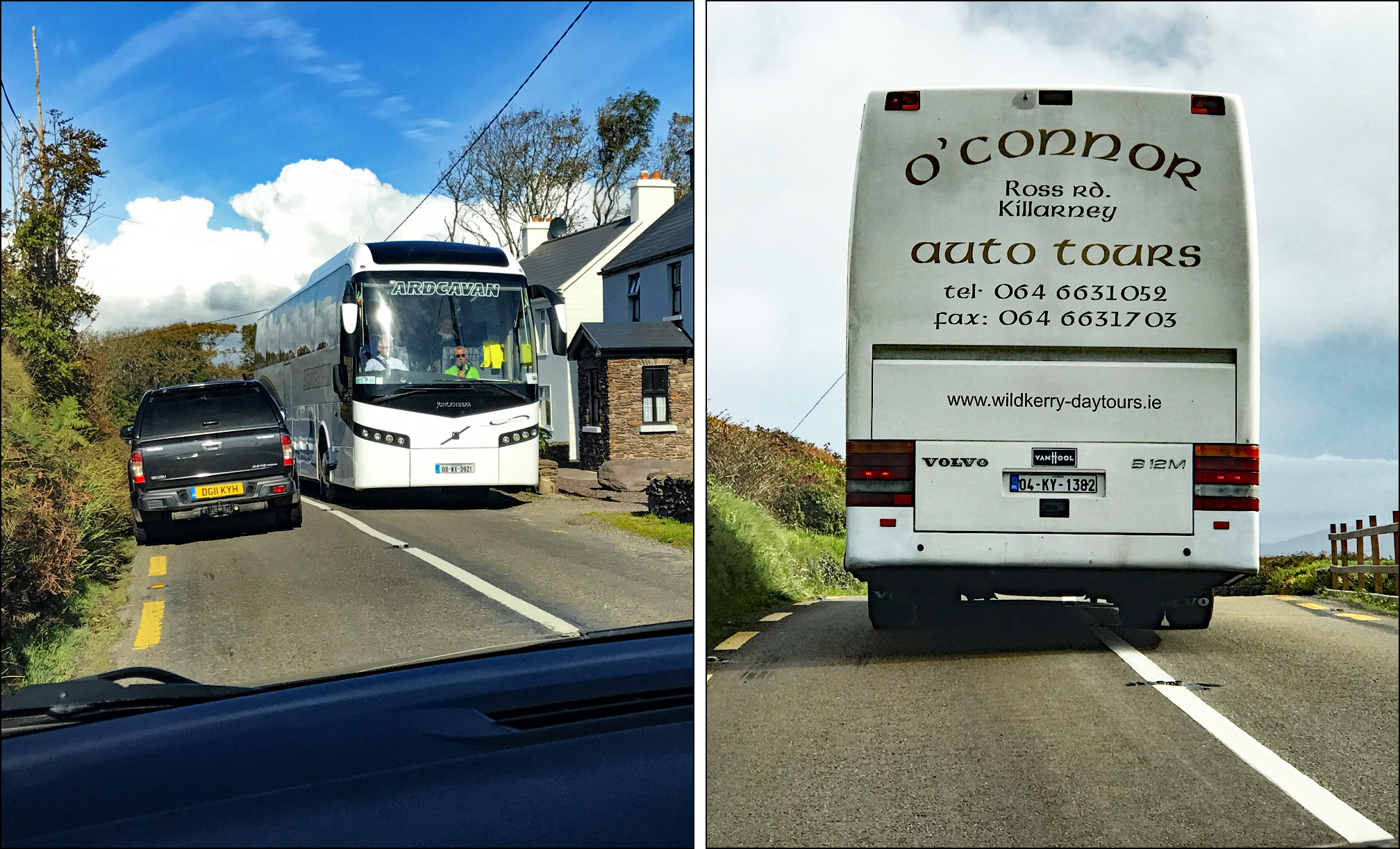So what’s the verdict on vacationing in South Kerry? That’s a little complicated. It’s certainly one of the most beautiful places you could ever hope to see, and Marian and I both loved it. Just to remind you, this was the view from our backyard every morning:

If that doesn’t get you drooling, you belong to a very different species than me. Unfortunately, there was one problem in paradise, and it wasn’t the weather, which was great the whole time we were there. It’s the roads, which are basically insane. Here are the four stages of driving in South Kerry:
- Frequent bouts of white-knuckled terror.
- A mild but continual state of alarm.
- Meh. I’ve seen worse in West Virginia.
- I wish I could have driven these roads in my old Porsche.
I got to Stage 2 within a few days, and I suppose I would have gotten to Stage 3 in another few weeks or months. It’s certainly true that over time you get better at centering your car in the narrow lanes; better at anticipating the curves; and better at trusting that cars coming in the opposite direction won’t barrel into you. Nonetheless, the roads have no shoulders and the lanes of even major routes are barely wide enough for a car, let alone a bus. This is what you have to put up with practically every minute you’re on the road:

There’s a vicious circle at work here. Because the roads are so treacherous, it makes a lot of sense to ditch the idea of driving and instead put yourselves in the hands of a tour operator. This in turn puts more buses on the road and makes driving even more treacherous, which prompts more people to take tours, which—well, you get the idea.
But it gets worse. I’m a relatively panic-free kind of person, and I’m also—surprisingly, I guess—fairly good at judging how much room my car has. But lots of people are considerably more nervous than me and/or not so good at judging how much room their car requires to get through a narrow space. Long story short, Marian spent much of the trip in terror even though she never drove the car herself. Just being a passenger was enough.
So this is a tough call. South Kerry¹ is a wonderful place to visit. But the state of the roads makes it hard to say it’s a relaxing place. You just spend too much time focused intensely on the road and gripping the steering wheel really hard when a tour bus barrels by about six inches off your right side. If you’re the fighter jet type, go ahead. But if you’re nervous about navigating even small roads in the United States, it’s not a good idea to drive around in South Kerry. As much as I loathe tour buses—and I loathe them even more now—that’s the better option for you.
¹We only saw a small part of Ireland, but oddly, the road problem seemed to be limited to the south. North of Kenmare, the lanes widened a few feet, and that makes a world of difference. I’m not sure if and where the dividing line really is, but the south half of County Kerry really does seem to be uniquely scary.


















